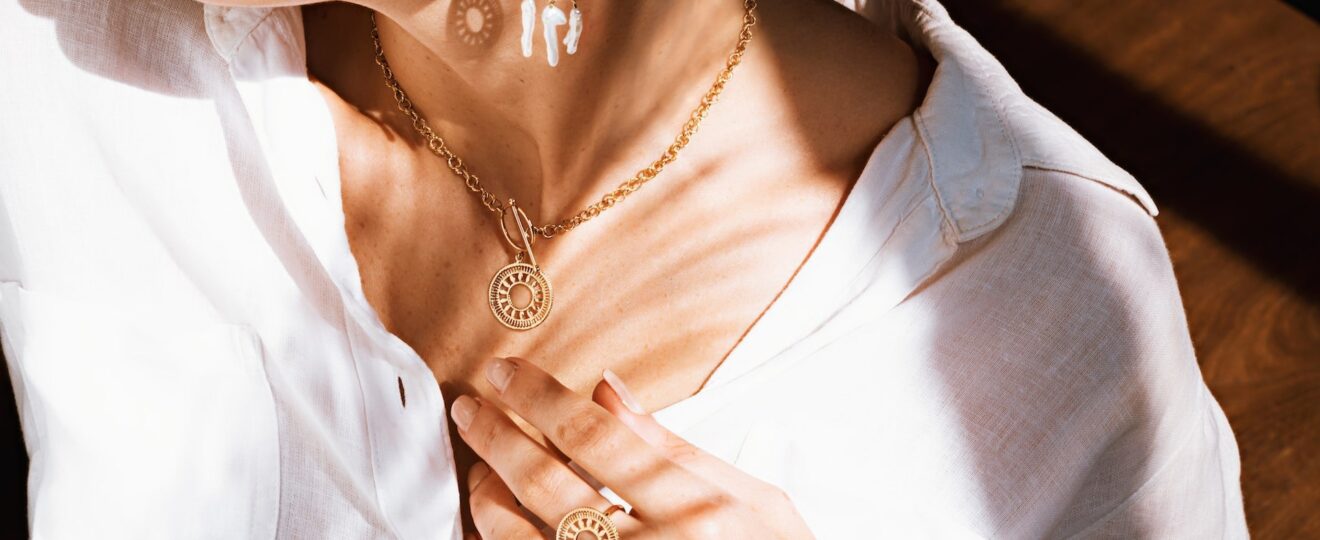Mood rings have captivated our imagination for decades with their ability to change colors based on our emotional state.
These intriguing pieces of jewelry not only add a touch of style to our outfits but also serve as personal mood indicators.
Let’s delve into the world of mood ring colors, exploring their meanings and shedding light on the emotions they represent.
Join us on this fascinating journey as we unravel the hidden language of mood rings.
The Basics of Mood Rings
Before diving into the meanings of different colors, it’s essential to understand the science behind mood rings.
Mood rings typically consist of a thermochromic element, such as liquid crystals or a special dye, encased in a glass or quartz stone.
These elements respond to changes in body temperature, which in turn are influenced by our emotions.
When the temperature of the ring changes, the crystals or dyes shift their molecular structure, causing the ring to display a new color.
Interpreting Mood Ring Colors
Each mood ring color represents a distinct emotional state.
However, it’s important to note that interpretations may vary slightly depending on cultural influences and personal experiences.
Let’s explore some of the most common mood ring colors and their associated meanings:
Blue or Green: Calm and Relaxed
- Represents a state of calmness, tranquility, and relaxation.
- Indicative of a balanced and harmonious emotional state.
- Suggests that you are at peace with yourself and your surroundings.
Yellow or Amber: Mixed Emotions
- Indicates a mix of emotions, including happiness, excitement, and some level of anxiety or restlessness.
- Reflects a state of anticipation or a decision-making process.
Pink or Red: Passionate and Energetic
- Represents intense emotions such as passion, love, and excitement.
- Indicates a high level of energy and enthusiasm.
- Signifies a strong connection with someone or the presence of deep emotions within you.
Purple or Violet: Spirituality and Intuition
- Associated with spiritual awareness and intuition.
- Indicates a strong sense of self-awareness, heightened intuition, and a deeper connection to your inner self.
- Suggests a reflective and introspective state of mind.
Black: Tension or Stress
- Suggests a state of tension, stress, or negative emotions.
- May indicate emotional exhaustion, anxiety, or a need for self-care and relaxation.
White: Purity and Clarity
- Represents purity, clarity, and a state of peace.
- Indicates a sense of balance and harmony within oneself.
Orange: Creativity and Optimism
- Reflects a state of creativity, inspiration, and optimism.
- Suggests a burst of energy and motivation to pursue artistic or innovative endeavors.
Brown: Groundedness and Stability
- Symbolizes stability, practicality, and a grounded state of mind.
- Indicates a focus on practical matters and a need for stability in life.
Factors Influencing Mood Ring Colors
Several factors can influence the display of mood ring colors:
Body Temperature:
Mood rings respond to changes in body temperature, so variations in your temperature can affect the colors displayed.
Factors like physical activity, environmental temperature, and overall health can impact your body’s temperature.
Emotional Intensity:
The intensity of your emotions can influence the extent of the color change in the mood ring.
Stronger emotions may lead to more vibrant and noticeable color shifts, while milder emotions may result in subtler changes.
Environmental Temperature:
Mood rings are sensitive to temperature, and variations in the external environment can affect their accuracy.
Extreme temperatures, such as exposure to hot or cold weather, can alter the ring’s color display.
Individual Differences:
Each person has a unique body temperature baseline and response to emotions, which can influence the colors displayed on a mood ring.
Some individuals may experience more pronounced color changes, while others may have more subtle shifts.
Ring Fit and Material:
The fit of the mood ring and the material it is made of can impact its interaction with body temperature.
A snug fit may provide more accurate readings, while a loose fit may result in slower or less noticeable color changes.
Additionally, different materials may have varying levels of sensitivity to temperature.
It’s important to consider these factors when interpreting the colors of a mood ring.
Personal awareness and understanding of one’s emotional state, coupled with knowledge of these influencing factors, can provide a more nuanced interpretation of the colors observed.
Additional Mood Ring Colors
While blue, green, yellow, pink, red, purple, black, white, orange, and brown are commonly associated with mood ring colors, it’s worth mentioning a few more:
Gray: Ambivalence or Uncertainty
- Gray hues suggest ambivalence, indecision, or a sense of uncertainty.
- Represents a mixed or neutral emotional state where conflicting feelings may be present.
Silver: Emotionally Balanced
- Silver tones indicate emotional balance and harmony.
- Reflects a state of equilibrium and inner peace.
Gold: Self-Confidence and Abundance
- Gold colors symbolize self-confidence, success, and abundance.
- Represents a positive mindset, self-assurance, and a feeling of prosperity.
Turquoise: Healing and Serenity
- Turquoise hues represent healing, serenity, and emotional well-being.
- Suggests a state of calmness, tranquility, and rejuvenation.
Conclusion
Mood rings continue to intrigue and fascinate us with their ability to reflect our emotional states.
By understanding the meanings associated with different mood ring colors, we can gain insights into our own emotions.
Remember that the interpretation of mood ring colors is subjective and can be influenced by various factors, including body temperature, emotions, and the surrounding environment.
By combining personal awareness with an understanding of these factors, we can deepen our connection to the language of mood rings and use them as tools for self-reflection and emotional awareness.
So, the next time you wear a mood ring, pay attention to the colors it displays and embrace the journey of exploring your own emotional landscape.
Frequently Asked Questions
What is the secret behind mood rings?
The secret behind mood rings lies in their thermochromic elements, such as liquid crystals or special dyes.
These elements are highly responsive to changes in body temperature, which in turn are influenced by our emotions.
When the temperature of the ring changes, the molecular structure of the thermochromic material shifts, causing the ring to display a different color.
The ring’s color change is essentially a physical reaction to the varying temperature of the wearer’s skin.
What stone is used in mood rings?
Mood rings typically use a glass or quartz stone as the base, within which the thermochromic elements are encapsulated.
The stone itself does not directly contribute to the color changes.
Instead, it acts as a protective casing for the thermochromic material, ensuring its longevity and durability.
The stone’s transparency allows the color changes to be visible and adds aesthetic appeal to the ring.
What makes a mood ring change?
A mood ring changes color primarily due to fluctuations in body temperature.
Body temperature is influenced by various factors, including emotional states, physical activity, and external temperature.
When your body temperature changes, the thermochromic elements in the mood ring respond to the shift, causing a corresponding change in the ring’s color.
For example, when you experience an increase in body temperature due to excitement or passion, the ring may shift to warmer colors like pink or red.
Conversely, when your body temperature decreases due to calmness or relaxation, the ring may display cooler colors like blue or green.
Therefore, it is the connection between your body’s temperature variations and the thermochromic elements in the ring that brings about the captivating color changes in a mood ring.










